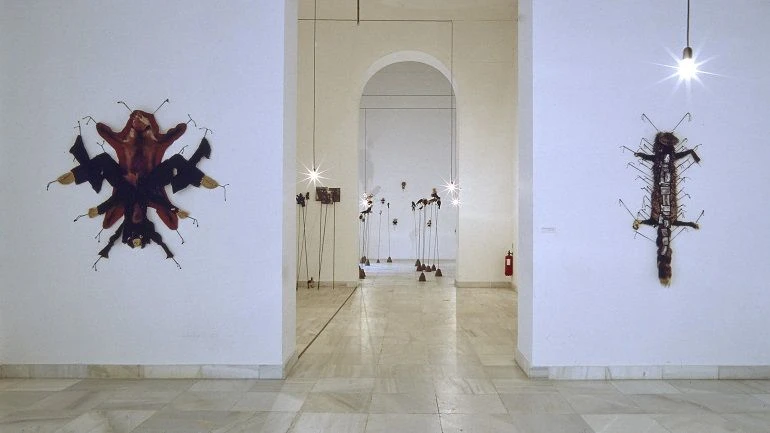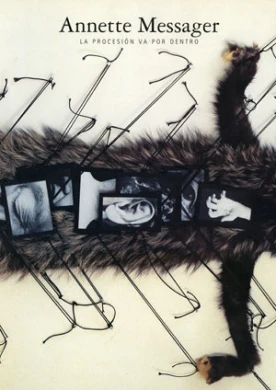Annette Messager. La procesión va por dentro

Messager belongs to a turbulent generation, the May '68 generation, that share the same critical attitude, questioning not only the way to produce art but also the traditional role of art genres under the slogan, “art is found in the street, not in the museum.”
Messager becomes interested in barely considered possessions and values, taking and utilizing them to develop her work, thus subverting the uses and feelings normally associated with these everyday objects. As a result, installations and photographs with aspects traditionally linked to femininity - wool, fabric, string and cuddly toys - are intermingled with others, for instance taxidermy animals in The Pensioners (1971-1972). In Protection (1998) the letters of the word are spelled out through the bodies of dismembered cuddly toys nailed to the wall.
Whilst her early works coincide with the beginning of the feminist movement, Messager denies being part of it, maintaining that being a woman and an artist is inextricably linked and it is that identity that gives rise to works such as the albums The Men I Love, The Men I Don't Love (1973). Moreover, Surrealism is not a superflous reference for Messager, as the curator and contemporary art specialist, Catherine Grenier, points put, “she doesn't shy away from underlining her interest in a movement that grabs her attention like no other because of the subjacent areas of banality. She shares her taste for the nooks and crannies of intimacy, stories, spirits and confessions that form part of her own vocabulary.”
Fragmentation is the preeminent idea running through Messager's work, whether it is the human body or dolls or objects and subject matter, as is the case with wool in Mes voeux sous filet (1997). Therefore, she goes even further by making the viewer participate, inviting them to treverse some of her installations. In Dependence-Independence (1995-1996) the heart-shaped piece reverts back to her last feeling: the work needs the circulation of the viewer to live and breathe. She also uses red as an accumulative and containing aspect, as in works such as Parade (1994-1995).
Based on these words and deeds, the divergent identities that Messager consciously and voluntarily adops appear - collector, practical woman, apprentice designer, forger and artist.
Artists
Organised by
Museo Nacional Centro de Arte Reina Sofía
Image gallery

